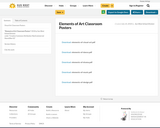
Visual Art Classroom Posters
- Subject:
- Arts Education
- Material Type:
- Primary Source
- Date Added:
- 07/23/2018

Visual Art Classroom Posters

In this lesson, students incorporate analyses of characters from "The Crucible" with examinations of original seventeenth-century portraits of Puritans to create a visual portrait of the character. The project culminates in a ŇPortrait Gallery WalkÓ where students present and defend their artwork.
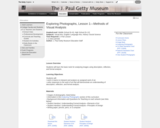
Students will learn the basic tools for analyzing images using description, reflection, and formal analysis.

Google Arts and Culture is a massive collection of videos and images of cultural artifacts from over 2,000 museums around the world. You can explore places around the world and gather vetted resources for lessons and activities for your classroom.
There are many things you can do with web version but there is even MORE to explore when you download the Arts and Culture App available for Android and IOS.
10 Things you can do with Google Arts and Culture: (plus much more!)
1. Explore pocket galleries
2. Color famous artwork
3. Take an art selfie
4. Play in a blob opera
5. Go on a Google Expedition
6. Do the cultural 5
7. Take an (augmented) reality check
8. Zoom in on art
9. Grab a lesson plan
10. Try a crossword puzzle

Students will work in groups to visually analyze a work of art and then research what was happening in the time period when the work was made. Students will then discuss what impact their research had on their original perceptions. Students will finally be given background information about the work of art and will discuss how their ideas are different or similar to what they read.
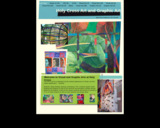
Lessons & exemplars for high school visual and graphic arts courses.
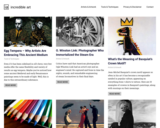
This site is easy to use, has tons of ideas, and breaks art ideas up by grade, art period, medium, artist, subject, and (what I love the most) integration. If you click on the Integration tab, there are numerous ideas on how to bring art into all your other subject areas. The ideas are endless!
*NOTE: Currently this site appears to be under construction for updates.

Information about various Indigenous artists and art styles in Canada.
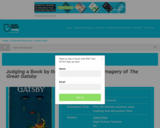
Students explore The Great GatsbyŐs allusion to art and its use of visual imagery and conclude their study by designing their own cover for the novel.

In this art history video discussion Dr. Beth Harris and Dr. Steven Zucker consider Fernand Khnopff's "I Lock the Door Upon Myself," 1891. Neue Pinakothek, Munich.
They disucss the Symbolist painters and a poem by Christina Rosetti.

This art history video presents a conversation between Salman Khan and Beth Harris about Leonardo da Vinci's "Mona Lisa" (c. 1503-1505, oil on panel) and its changing meaning. (Musج©e du Louvre).
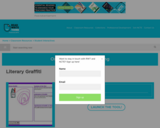
Literary Graffiti, a high school version of the Doodle Splash student interactive, also aims to teach students to visualize what they are reading to help them develop as readers.

Students discover how visual artists represent a story by depicting a single moment from it.

Students will make connections between their personal experiences and a work of art and use visual analysis to describe a portrait.

Students will "read" a visual image very much like they would read words in a story.

Students will spend more time looking at details and write an imagined interview with a sitter.

Students will apply what they have learned about portraits in a formal writing exercise.

In this art history video discussion Beth Harris and Steven Zucker look at the "Ludovisi Battle Sarcophagus: Battle of Romans and Barbarians," c. 250-260 C.E., preconneus marble. Palazzo Altemps: Museo Nazionale Romano, Rome. This sarcophagus, also known as the Great Ludovisi sarcophagus (or the Via Tiburtina Sarcophagus), is thought to be a memorial to the wars between the Ostrogoths and Imperial Romans then taking place. It was found in 1621 and named after Ludovico Ludovisi, its initial modern owner.
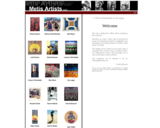
This site is dedicated to Metis artists working in the visual arts.
The links on the site were set up for information purposes to highlight some interesting work being produced by Metis visual artists in Canada.
The images & text found on each artists' page is excerpted from various sources available on-line. The sources have been indicated and you are encouraged to click on the links to those websites.
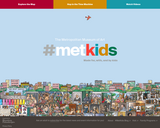
This resource is recommended for kids ages 5 and up. An extensive catalog of content, as well as a tool to partake in a virtual tour of the museum, will give kids a dose of art and culture. Kids can learn about a particular period or collection and explore art via the “Time Machine,” starting as early as 8000-2000 BC to present time with fun facts and videos.